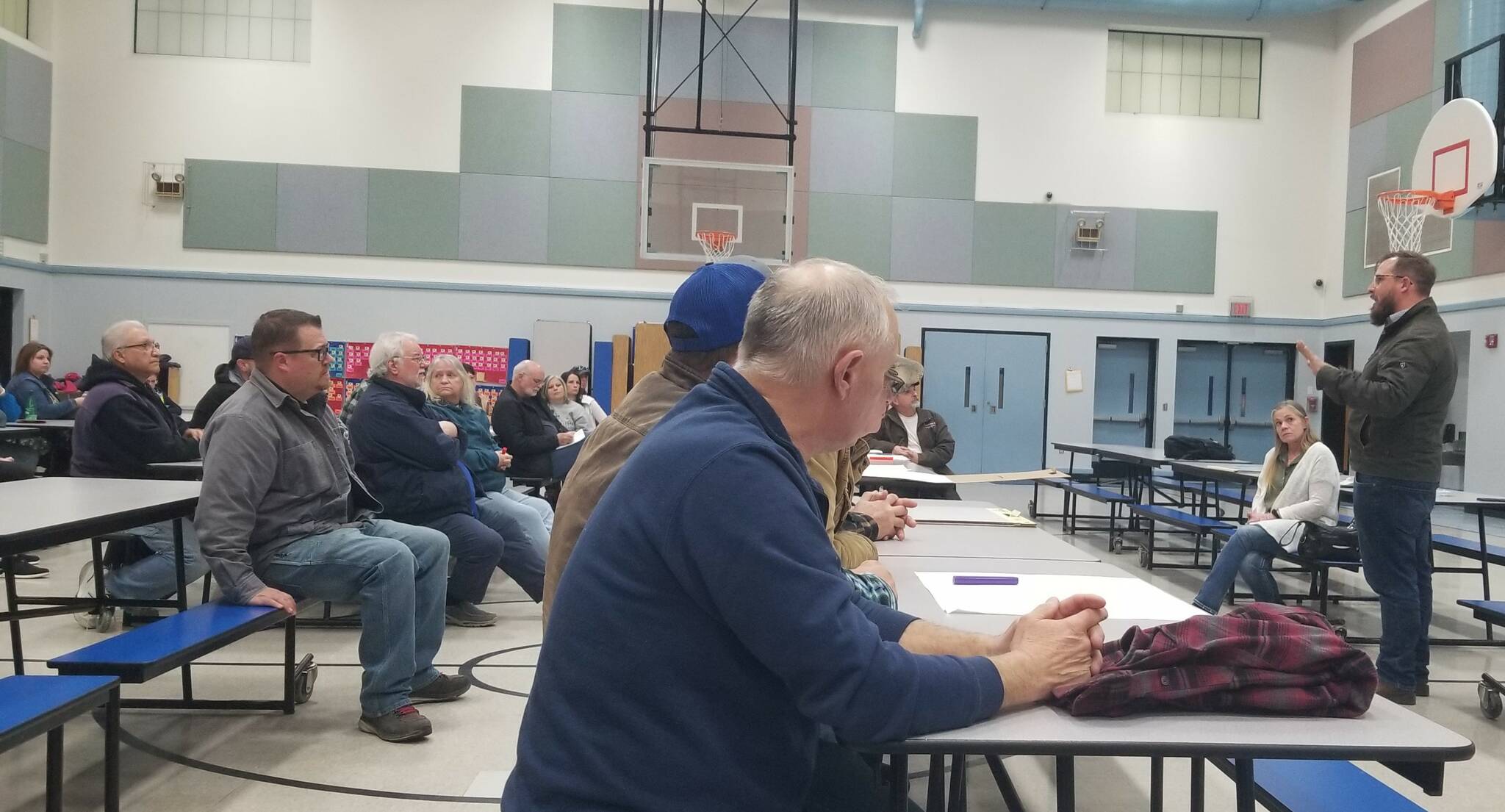For more than two and a half hours, feelings of frustration and anger permeated the Elma Elementary School cafeteria on Wednesday, March 1 as the Elma School District held its annual Long-Range Facilities Meeting.
The gathering was the first meeting following a rejection of a proposed $66 million bond that would’ve funded the construction of new classrooms and facilities for the quickly growing district.
The failure of the 20-year bond, which would have garnered property taxes from owners at about $2.68 per $1,000 of assessed value, is not a first for the city of Elma as the school district has been unsuccessful in garnering enough votes on financial proposals since 1992. While many of the more than 70 people who attended the Long-Range Facilities Meeting expressed differing ideas of what to do with the growing challenges of enrollment growth, class size restrictions, unusable buildings and continued operations, there appeared to be a consensus on what the major problem is — community engagement.
“I feel that not enough people in the community are willing to invest in kids, but I also feel like some of what’s being asked could either be restructured or made more realistic for a small community,” said one parent in attendance. “We don’t need a giant sporting complex but maybe restructuring the field and putting it in a grandstand instead. I can see both sides of it, but I feel like ultimately the community needs to be willing to invest in their kids.”
Much of the bond’s funding was aimed to increase student capacity for the fast-growing district and ease the strain on bulging classrooms. For that purpose, bond funding had devoted about $45 million to the construction of a new intermediate elementary school on the grounds of Elma Elementary. However, the request for $15 million to renovate the district’s athletics fields on the grounds of Elma Elementary appeared to be a breaking point for a chunk of the people in attendance.
When asked why the district continues to request money for a new stadium, Elma School District Superintendent Chris Nesmith said it was because community engagement through online surveys deemed it was popular. However, Nesmith did note that while the stadium did receive majority support from responding correspondents, only 10% of constituents accessed the surveys.
While the engagement in the surveys is drastically low, it does show similarities to engagement with voting on the bond. Less than 1,800 Elma School District voters cast their ballots in the Feb. 14 special election, with about 65% of voters rejecting the measure and 35% voting in support. About 100 of the ballots came from Mason County, where the bond fared slightly better, but only by about 2%. Elma School District currently has more than 3,000 eligible voters.
“I think there could be progress if people would come but the same people who don’t show up also get on Facebook and warrior-type complain about the school wanting to steal their money. They’re not coming to these meetings and they’re not giving any input,” said another parent at the meeting.
According to Nesmith, the biggest concern is finding housing for students. The district has grown by about 170 students in the last year and a half, and Elma Elementary is one of the largest in the state, currently serving 750 students while a typical elementary school serves under 500. Nesmith also shared the financial situation of the Elma School District and how the money is spent every year.
While the goal now seems to be purchasing portables, the cost is not cheap. For one double classroom portable, the price is estimated to be more than a quarter million dollars. However, once all the hookups and ground prep are complete, that price can skyrocket to $400,000.
Other alternatives were presented such as shifting 7th and 8th grades to Elma High School where more space is available, and moving students from East Grays Harbor High School to the Elma High School Annex building. Each proposal, however, came with concerns from members of the audience.
Other members expressed they want to see more notifications by the school districts such as surveys that can be found at banks, grocery stores and the post office, as well as automatic calls and texts of meetings that talk about district financing.
“I didn’t know about the bond until it came out on the ballot. I’m on social media, I check my emails from the school, I have two kids in two different schools, and I had no idea about it. I think they could do more to reach out and get more community involvement,” said one mother.
Nesmith said he will take the information presented from the meeting and use it going forward, telling the crowd that another meeting will take place on April 19 to discuss options that can be used as long-term solutions, as well as what a capital-fund levy could look like.
“At the end of the day, we have students we need to house. We had a lot of community engagement tonight and ultimately that’s what we want. We want to make sure as a school district, we represent the voice of our community,” Nesmith said.
Contact Reporter Allen Leister at 360-463-3572 or allen.leister@thedailyworld.com



